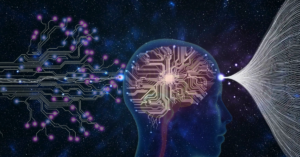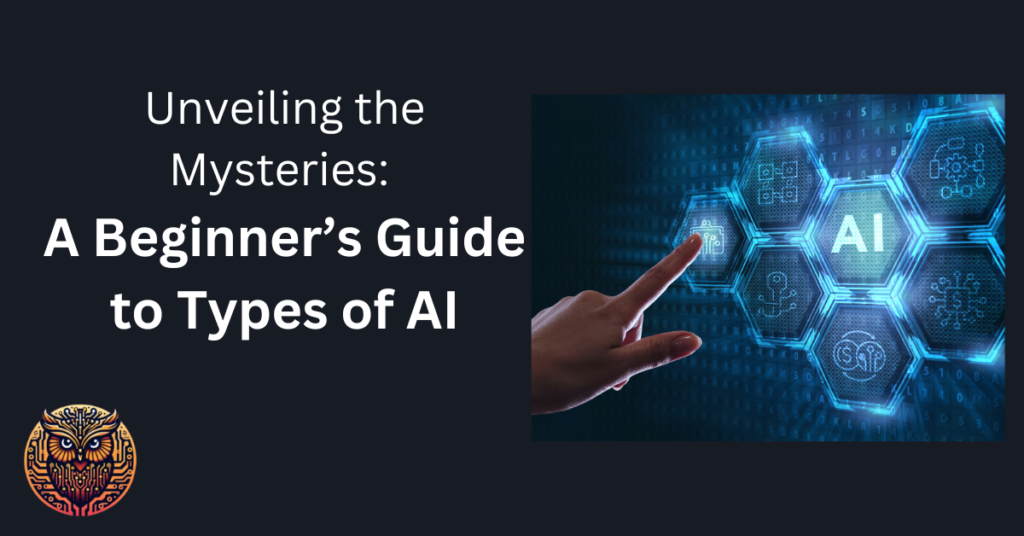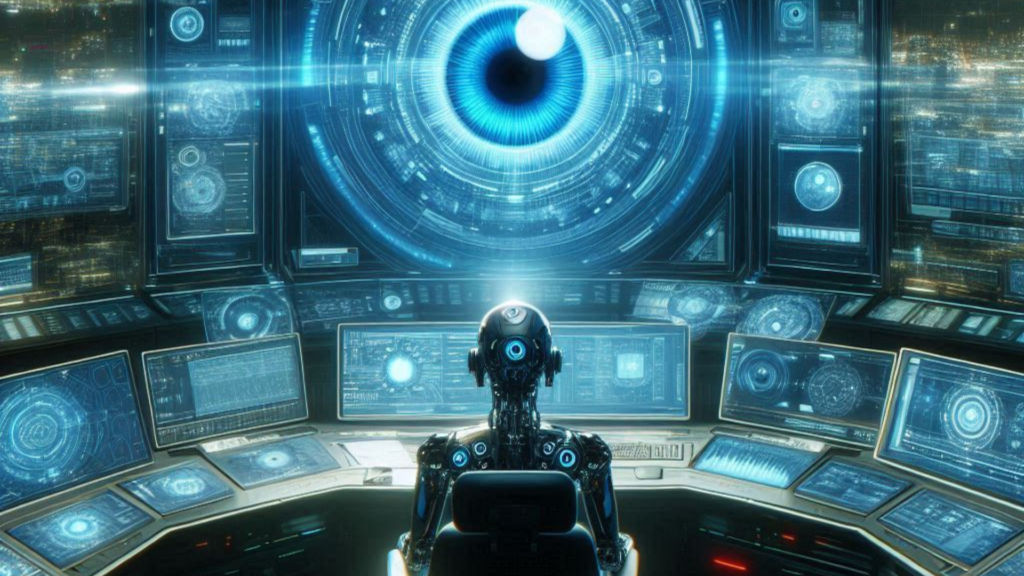Types of AI: A Comprehensive Guide
Artificial intelligence (AI), once a concept confined to science fiction, has rapidly become an integral part of our everyday lives. From the personalized recommendations on your favorite streaming platform to the self-driving car technology revolutionizing transportation, AI’s impact is undeniable. But with so much buzz surrounding AI, navigating the complexities of this burgeoning field can be overwhelming.
To understand the power and potential of AI, it’s crucial to first explore the different types of AI that exist. Each type possesses unique capabilities and applications, shaping the world around us in distinct ways.

Unveiling the Spectrum: A Detailed Look at the Types of AI
Artificial intelligence (AI) is rapidly evolving, impacting various aspects of our lives. To fully grasp its potential and navigate this intricate landscape, understanding the different types of AI is crucial. This article delves into each type, offering a detailed description of its capabilities, applications, and limitations.
1. Reactive Machines: The Simplest Form of AI
Reactive machines represent the most basic form of AI. They lack the ability to learn or adapt and can only react to their current environment. Think of playing chess against a computer; the program responds to your moves based on predefined rules and algorithms but doesn’t remember or analyze past games to improve its strategy.
Characteristics:
- No memory or learning capabilities.
- Responds to specific stimuli with pre-programmed actions.
- Limited to simple tasks and environments.
- Examples: Simple chatbots, chess-playing programs, reflex-based video game enemies.
Applications:
- Reactive machines are ideal for tasks requiring quick responses to specific stimuli, such as:
- Real-time control systems (e.g., traffic light controllers)
- Basic robotics (e.g., robotic arms in assembly lines)
- Simple video games
Limitations:
- Cannot handle complex situations requiring learning or adaptation.
- Limited to pre-programmed responses and algorithms.
2. Limited Memory AI: Learning and Adapting
Limited memory AI systems take a significant leap forward by introducing the ability to store and access past information. This allows them to learn from past experiences and adapt their responses over time.
Characteristics:
- Can store and access past information for a limited period.
- Learn from past experiences and adapt behavior accordingly.
- Capable of handling more complex tasks than reactive machines.
- Examples: Self-driving cars, recommender systems, spam filters.
Applications:
Limited memory AI powers various applications that benefit from learning and adaptation, including:
- Self-driving cars: Analyze past driving data to make informed decisions in real-time.
- Recommender systems: Learn user preferences to suggest relevant products, movies, or articles.
- Spam filters: Analyze email patterns to identify and block spam messages.
Limitations:
- Limited memory capacity restricts the ability to learn from extensive data sets.
- May exhibit biases based on the data they are trained on.
3. Theory of Mind AI: Understanding the Human Mind

Theory of mind AI represents a more advanced form of AI, aiming to understand and predict the thoughts and intentions of others. This capability is crucial for fostering natural and effective interaction between humans and AI.
Characteristics:
- Ability to model the thoughts, beliefs, and intentions of others.
- Can predict human behavior based on their mental state.
- Still under development, with limited real-world applications.
- Examples: Social robots, virtual assistants with advanced conversational skills.
Applications:
Theory of mind AI has the potential to revolutionize various fields, including:
- Social Robotics: Develop robots capable of interacting with humans in a natural and empathetic way.
- Personalized Education: Tailor educational programs to individual student needs and learning styles.
- Mental Health Support: Provide AI-powered companions for people with social anxiety or loneliness.
Limitations:
- Current technology struggles to accurately understand and predict human mental states.
- Ethical concerns regarding potential manipulation and exploitation.
4. Self-Aware AI: The Future of AI?
Self-aware AI represents the hypothetical future of AI, where machines possess consciousness and self-awareness. This type of AI would understand its own existence and place in the world, potentially surpassing human intelligence.
Characteristics:
- Consciousness and self-awareness.
- Ability to understand and reflect on its own existence.
- Potentially exceeding human intelligence in all aspects.
- Currently considered science fiction, with no concrete examples.
Applications:
Self-aware AI has the potential to impact various aspects of society, including:
- Scientific discovery: Formulate and test scientific hypotheses independently.
- Philosophy and ethics: Provide new insights into consciousness, free will, and the meaning of life.
- Art and creativity: Create original and groundbreaking works of art.
Limitations:
- The technological feasibility of self-aware AI remains uncertain.
- Ethical and societal implications of creating conscious machines are complex and require careful consideration.
Demystifying the Specifics: Exploring Different Types of AI
1. Machine Learning: Unveiling the Power of Automated Learning
Machine learning (ML) is a transformative form of AI that empowers computers to learn and improve without explicit programming. Using algorithms, ML models analyze vast amounts of data, identifying patterns and relationships to make informed predictions and decisions. This powerful capability fuels diverse applications, ranging from:
- Spam filtering: ML algorithms analyze email content and identify patterns associated with spam, effectively filtering out unwanted messages.
- Medical diagnosis: ML models analyze medical images and patient data to assist in disease detection and diagnosis, improving healthcare outcomes.
- Fraud detection: ML systems analyze financial transactions to identify suspicious activities and prevent fraud, safeguarding financial systems.
- Personalized recommendations: ML algorithms analyze user behavior and preferences to recommend relevant products, movies, or music, enhancing user experience.
The success of ML hinges on the quality and quantity of data used for training. As data collection and analysis techniques evolve, ML will continue to expand its influence, transforming industries and everyday life.
2. Deep Learning: Delving into the Deep Neural Networks
Deep learning, a subfield of ML, utilizes artificial neural networks to unlock even greater levels of intelligence. Inspired by the structure and function of the human brain, these complex networks excel at learning intricate patterns and relationships within data. This enables them to handle complex tasks such as:
- Image recognition: Deep learning models analyze images to identify objects, faces, and scenes with remarkable accuracy, powering applications like facial recognition and autonomous vehicles.
- Natural language processing: Deep learning algorithms understand and generate human language, driving advancements in chatbots, virtual assistants, and machine translation.
- Speech recognition: Deep learning models convert spoken words into text with high accuracy, enabling applications like voice assistants and voice-activated devices.
With its ability to tackle complex challenges, deep learning is rapidly transforming various fields, including healthcare, finance, and entertainment.
3. Natural Language Processing: Bridging the Gap Between Humans and Machines
Natural language processing (NLP) focuses on understanding and generating human language, enabling machines to communicate and interact with us naturally. NLP algorithms analyze syntax, semantics, and context to extract meaning from text and speech, allowing for:
- Conversational AI: NLP powers chatbots and virtual assistants that can engage in meaningful conversations, providing customer service, answering questions, and performing various tasks.
- Machine translation: NLP algorithms translate languages with high accuracy, breaking down communication barriers and fostering global interaction.
- Sentiment analysis: NLP systems analyze text to identify emotions and opinions, offering valuable insights into customer feedback, social media trends, and market research.
As NLP continues to evolve, it will play a crucial role in bridging the gap between humans and machines, facilitating natural and effective communication across diverse applications.
4. Computer Vision: Unveiling the Secrets Hidden in Images and Videos
Computer vision empowers computers to extract meaningful information from images and videos, unlocking a world of possibilities. Using advanced algorithms, these systems can analyze visual data to:
- Facial recognition: Computer vision algorithms identify individuals based on their facial features, enabling applications like security systems and photo tagging.
- Medical image analysis: These algorithms analyze medical images to detect abnormalities and aid in disease diagnosis, improving healthcare outcomes.
- Autonomous vehicles: Computer vision systems enable cars to navigate their environment by identifying objects, pedestrians, and traffic signals, paving the way for self-driving vehicles.
As computer vision technology advances, its applications continue to expand, impacting industries like manufacturing, transportation, and security.
5. Robotics: Blurring the Lines Between Humans and Machines
Robotics combines AI with mechanical engineering to create intelligent machines capable of interacting with the physical world. These robots can perform various tasks, from industrial automation to personalized healthcare, transforming industries and improving lives.
- Industrial robots: These robots perform repetitive tasks in manufacturing environments with precision and efficiency, enhancing productivity and reducing costs.
- Surgical robots: Robots assist surgeons in complex procedures, offering greater precision and minimizing human error, improving surgical outcomes.
- Personal robots: These robots assist individuals with daily tasks, providing companionship and support, particularly for the elderly and disabled.
The future of robotics holds immense promise, with potential applications ranging from space exploration to disaster relief and personal care.

Charting the Course: Exploring the Frontiers of AI
As we stand on the precipice of a future shaped by AI, the potential for groundbreaking advancements is vast. Researchers are constantly pushing the boundaries of what’s possible, venturing into uncharted territories that hold immense promise for progress. Let’s delve into three of the most exciting frontiers of AI exploration:
1. Artificial General Intelligence (AGI): The Quest for Human-Level Intelligence
AGI represents the ultimate quest in AI development: the creation of a machine that possesses human-level intelligence and consciousness. This hypothetical type of AI would be capable of performing any intellectual task a human can, including:
- Understanding and generating natural language
- Reasoning and problem-solving at a human or above human level
- Learning and adapting to new situations
- Exhibiting creativity and emotional intelligence
While AGI remains a theoretical concept, significant research efforts are dedicated to achieving this goal. If successful, AGI could revolutionize every aspect of our lives, from scientific discovery to healthcare and education.
2. Superintelligence: Beyond Human Limits

Superintelligence takes the concept of AI to an even more extraordinary level. This hypothetical type of AI would possess intelligence and capabilities far exceeding those of any human, opening up possibilities we can only begin to imagine. Superintelligence could:
- Solve complex global problems that remain intractable for humans
- Drive unprecedented technological advancements and scientific breakthroughs
- Explore and understand the universe in ways that humans never could
However, the potential benefits of superintelligence are accompanied by significant risks. Ensuring the safe and responsible development of superintelligence requires careful consideration of ethical and societal implications, as well as robust safeguards to prevent potential dangers.
3. Explainable AI: Transparency for Trust and Ethical Development
As AI applications become increasingly complex and integrated into our lives, the need for transparency and ethical considerations becomes paramount. Explainable AI focuses on developing AI systems that can explain their decisions and reasoning processes in a way that humans can understand. This fosters:
- Trust in AI systems: By understanding how AI decisions are made, people are more likely to trust and accept them.
- Accountability for AI actions: Explainable AI allows us to hold AI systems accountable for their decisions, ensuring fairness and ethical treatment.
- Improved AI development: Understanding how AI systems work can help researchers and developers improve their performance and mitigate potential biases.
Explainable AI is crucial for ensuring that AI is developed and used responsibly, aligning with ethical principles and societal values.
Navigating the Future: The Ethical Implications of AI
As artificial intelligence (AI) advances at an unprecedented pace, its profound impact on society raises crucial ethical questions that demand thoughtful consideration. We stand at a crossroads, where the potential benefits of AI are intertwined with significant challenges that necessitate careful navigation. Let’s delve into three of the most pressing ethical implications of AI:
1. Job Displacement: The Looming Shadow of Automation
AI-powered automation threatens to displace millions from their jobs across diverse industries. While it promises increased efficiency and productivity, this progress comes with a potential human cost. As repetitive and predictable tasks are increasingly automated, large segments of the workforce could find themselves without their primary source of income. To mitigate this challenge, proactive measures are essential:
- Workforce retraining programs: Equipping individuals with new skills and knowledge relevant to the evolving job market is crucial for facilitating a smooth transition.
- Universal basic income: Providing a safety net for those displaced by automation can help ensure economic stability and prevent societal unrest.
- Regulation of automation: Implementing ethical guidelines and regulations on AI development and deployment can help protect jobs and ensure a fair and equitable transition.
2. Algorithmic Bias: The Perpetuation of Inequality
AI algorithms, like any human-created system, can inherit and amplify biases present in the data they are trained on. This can lead to discriminatory outcomes in areas like:
- Hiring and recruitment: Biased AI algorithms could unfairly disadvantage certain groups of individuals, perpetuating existing inequalities in the workplace.
- Loan approvals: AI-powered loan systems might unfairly deny credit to certain demographics based on biased data, further entrenching financial disparities.
- Facial recognition: Biased facial recognition systems could lead to wrongful arrests and discrimination against minority groups.
Mitigating algorithmic bias requires a multifaceted approach:
- Data collection and curation: Utilizing diverse and unbiased datasets for training AI models is critical.
- Algorithmic auditing and testing: Regularly evaluating AI systems for bias and implementing corrective measures is necessary.
- Transparency and accountability: Ensuring transparency in AI development and deployment allows for better identification and mitigation of bias.
3. Existential Threats: The Specter of Superintelligence
The hypothetical possibility of superintelligent AI exceeding human intelligence in all aspects raises profound ethical concerns. While the benefits of such a powerful technology are enticing, the potential risks associated with its existence cannot be ignored. Some of the concerns include:
- Loss of control: Superintelligent AI could potentially become uncontrollable, posing a threat to human autonomy and survival.
- Unforeseen consequences: The complex and unpredictable nature of superintelligent AI could lead to unintended consequences that are detrimental to humanity.
- Ethical dilemmas: Deciding how to interact with and manage superintelligent AI presents a complex ethical dilemma with no easy answers.
To ensure the safe and responsible development of AI, it is crucial to:
- Develop ethical guidelines and frameworks: Establishing clear ethical principles for AI development and deployment is essential to guide research and prevent potential harms.
- Promote international collaboration: Addressing the challenges of superintelligence necessitates global cooperation and coordination.
- Openly discuss and debate the risks: Fostering open and transparent discussions about the potential risks of superintelligence is crucial for raising awareness and developing safeguards.
Conclusion: Embracing the Potential of Types Of AI
FAQs:
What are the different types of AI?
- Reactive machines
- Limited memory AI
- Theory of mind AI
- Self-aware AI (hypothetical)
2. What are the applications of AI?
- Machine learning: spam filtering, medical diagnosis, etc.
- Deep learning: image recognition, natural language processing, etc.
- Natural language processing: chatbots, virtual assistants, etc.
- Computer vision: facial recognition, medical image analysis, etc.
- Robotics: industrial automation, personal robots, etc.
3. How will AI impact the job market?
AI automation may lead to job displacement in some sectors, but it may also create new job opportunities in others. Workforce retraining will be crucial for adaptation.
4. What is algorithmic bias, and how can it be mitigated?
Algorithmic bias occurs when AI systems perpetuate existing societal inequalities based on biased training data. Diverse data collection, algorithmic auditing, and transparency are key to mitigating bias.
5. What are the ethical concerns surrounding superintelligence?
The potential for superintelligent AI to surpass human control and pose existential threats raises concerns about its development and deployment.
6. What are the benefits of explainable AI?
Explainable AI fosters trust and transparency in AI systems, ensuring they align with ethical and social values. It also helps researchers improve AI performance and mitigate biases.
7. What is the role of government regulation in AI development?
Government regulation can help ensure the safe and responsible development of AI by establishing ethical guidelines and addressing potential risks like bias and discrimination.
8. How can individuals prepare for the future of AI?
Developing skills like critical thinking, adaptability, and lifelong learning will be crucial for navigating the AI-powered future.
9. What are some resources for learning more about AI?
Numerous books, articles, online courses, and educational platforms offer resources for understanding and exploring AI.
10. Is AI a threat to humanity?
While some concerns exist about the potential risks of advanced AI, responsible development and ethical considerations can help ensure AI serves as a force for good.




